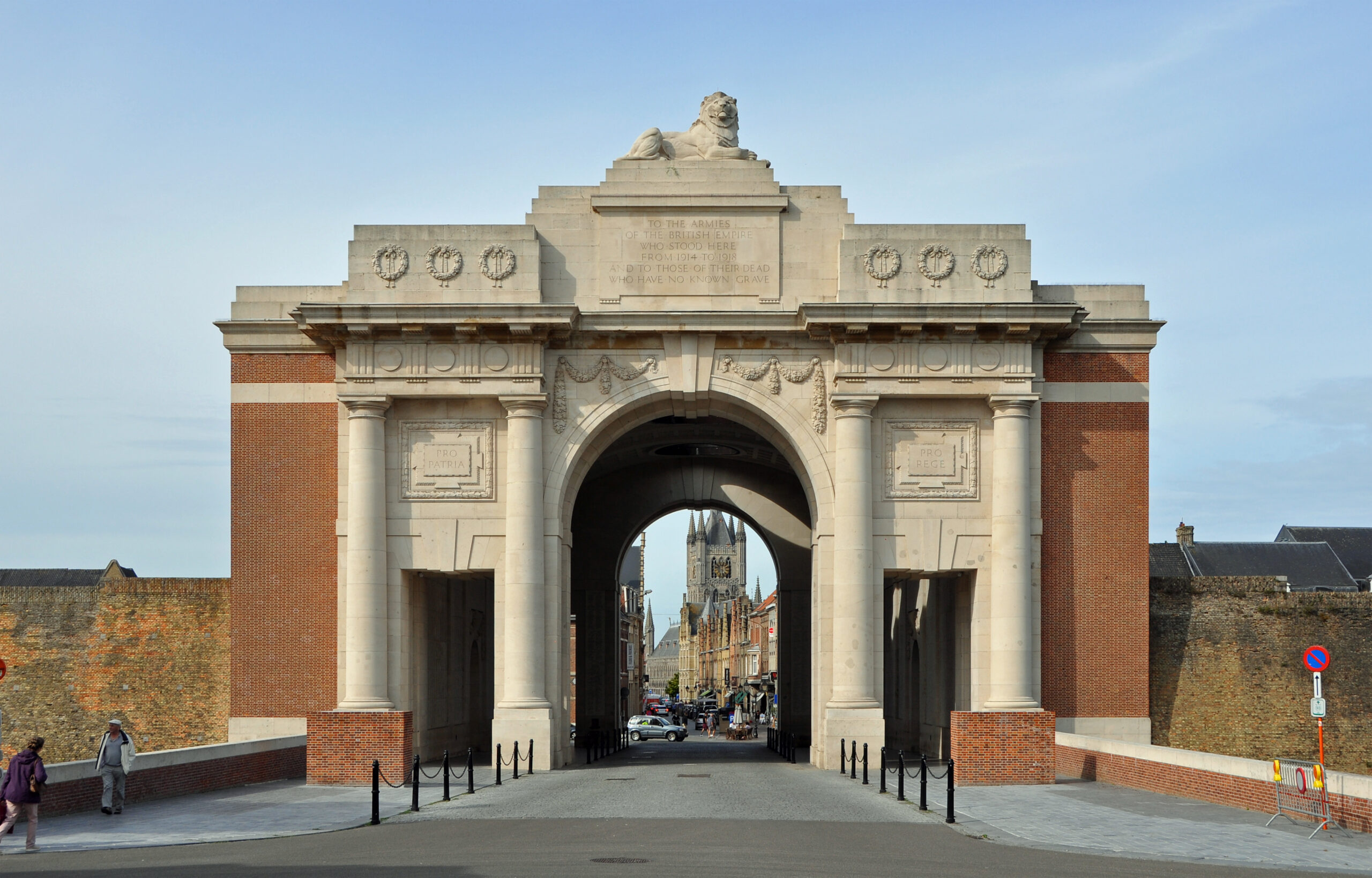Menin Gate: Gateway to Memory in the Heart of Ypres
Nestled in the historic town of Ypres, the Menin Gate stands as one of the most powerful and poignant reminders of the First World War. This imposing white stone memorial arches over the eastern entrance of the town, once the departure point for thousands of British and Commonwealth soldiers heading to the front lines. For many, it was their last journey — and their names are now etched into the walls of the gate, never to be forgotten.
A Monument to the Missing
The Menin Gate Memorial to the Missing honors over 54,000 British and Commonwealth troops who died in the Ypres Salient and have no known grave. Designed by Sir Reginald Blomfield and unveiled in 1927, the structure carries an overwhelming emotional presence. Its vast stone panels are inscribed with the names of the missing — infantrymen, artillery gunners, engineers, medics — all of them lost in the muddy chaos of Flanders, without a marked burial.
Walking beneath its high vaulted ceiling, one is struck not just by the architecture, but by the silence it demands. Each name carved into the stone is a life once lived — a son, a brother, a friend — and together they tell a story of unfathomable loss.
The Last Post Ceremony: A Ritual of Remembrance
Every evening at precisely 8:00 PM, traffic is halted, and the Menin Gate becomes the stage for one of the world’s most enduring acts of remembrance: the Last Post Ceremony. Local buglers from the Ypres Fire Brigade sound the haunting notes of the “Last Post,” echoing through the stone arches. Since 1928, this ceremony has taken place almost every single day — paused only during the German occupation in World War II — and it continues to draw visitors from every corner of the globe.
This daily ritual is not just a tourist attraction; it is an act of collective memory. Veterans, school groups, descendants of the fallen, and curious travelers alike gather to pay tribute. Wreaths are laid, heads are bowed, and for a few minutes, time seems to pause. It’s a humbling experience that leaves few dry-eyed.
A Living Memorial
What sets the Menin Gate apart is its combination of grandeur and intimacy. While it is massive in scale, it never feels impersonal. The stories behind the names—men lost in the chaos of battle, whose families never received closure—are present in every carved letter. Unlike a cemetery, there are no graves to tend here. The gate itself is the tombstone.
As you stand within the monument, you may notice the faint marks of weathering on the stone, the patina of nearly a century of remembrance. It is a place that breathes history, but also endurance. The very act of continuing the Last Post each evening keeps these men alive in our collective consciousness.
Ypres: A Town Shaped by War and Rebirth
Ypres, or Ieper as it’s known in Flemish, was almost entirely destroyed during the First World War. Today, it is a town reborn — its medieval buildings painstakingly reconstructed, its streets lined with cafés and shops, its skyline once again dominated by the majestic Cloth Hall. Just a short walk from the Menin Gate, the In Flanders Fields Museum offers a deeply immersive look into the conflict, complete with personal stories, artifacts, and multimedia installations.
Exploring Ypres is like walking through a living museum. From the trenches of Sanctuary Wood to the serene beauty of nearby Commonwealth cemeteries, the entire region is steeped in memory.
Plan Your Visit
Whether you’re a history enthusiast, a descendant of a fallen soldier, or simply seeking a moment of reflection, the Menin Gate is a place that speaks to the soul. Time your visit to coincide with the Last Post Ceremony and witness a tradition of remembrance that transcends generations.
Come with respect. Leave with perspective.
